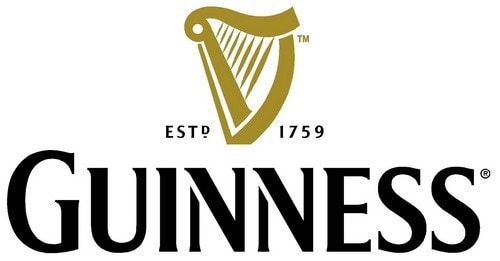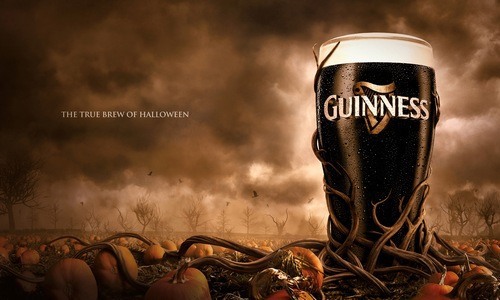The Marketing mix of Guinness analyses the 4Ps of Guinness, which includes the Product, Price, Place, and Promotion of Guinness. Guinness is a subsidiary brand of its parent company, Diageo. It is associated with the beverage industry and deals in making dry stout and beer. Guinness is of Irish origin and has achieved an iconic status in the global beer industry. The company has targeted beer drinkers of every age group as its potential customers. Guinness was introduced to the consumer market in 1759 by its founder, Arthur Guinness. Some of its competitors are as follows-
- Carlsberg
- Heineken International
- Corona
About Guinness
- Type: Subsidiary
- Industry: Beverage
- Founded: 1759
- Founder: Arthur Guinness
- Headquarters: St. James’s Gate, Dublin, Ireland
- Area served: Worldwide
- Current CEO: Alannah Hopkin
- Number of employees: 2,500
- Major Products: Guinness Stout
Table of Contents
Guinness Product Strategy
Guinness has projected its product line as a healthy beer because of its antioxidant compounds. Its estimated annual sales are 850 million liters, and its recipe includes ingredients like brewer’s yeast, hops, roast malt extracts, barley, and water.
Guinness has a unique taste of burnt flavor derived after roasting a small portion of barley, and its coloring seems like the darkest shade of Ruby. It is frequently used in several recipes as a vital ingredient in alcoholic beverages. Following are the variants in the Guinness product kitty–
- Guinness Draught
- Guinness Mid-Strength
- Guinness Foreign Extra Stout
- Guinness Red Harvest Stout
- Guinness Original/Extra Stout
- Guinness Bitter
- Guinness Special Extra Stout
- Malta Guinness
- Guinness Extra Smooth
- Guinness Zero
- 250 Anniversary Stout
- Guinness Blonde
In the year 2005, a limited edition was launched titled Brewhouse Series, and it included-
- North Star
- Toucan Brew
- Brew 39
Guinness has been associated with the manufacturing of Craft Beers, and it includes-
- West Indies Porter
- Dublin Porter
The product mix of Guinness in 2023 is as follows(Source)
- Guinness Draught: This is the flagship product and the most well-known Guinness beer. It is known for its dark, creamy, and smooth texture, often served on draft from nitrogen-infused cans or kegs. Guinness Draught is characterized by its iconic dark color, rich roasted malt flavor, and creamy head.
- Guinness Extra Stout: This is a more robust version of the classic Guinness Draught. It has a slightly higher alcohol content and a more pronounced bitter taste, with a deep, dark flavor profile.
- Guinness Foreign Extra Stout: This variation is brewed for international markets and has a higher alcohol content than the standard Guinness Draught. It features a bold and complex flavor profile with hints of fruit and caramel.
- Guinness Blonde American Lager: This is a lighter and less traditional offering from Guinness. It’s a golden lager with a crisp and refreshing taste, targeting a different segment of beer drinkers.
- Guinness Nitro IPA: A modern twist on the traditional stout, this product combines the creaminess of nitrogen-infused beer with the hoppy flavors of an IPA. It offers a unique drinking experience.
- Guinness Antwerpen Stout: This limited-edition stout pays homage to the original recipe brewed in the early 1900s. It’s characterized by its deep, dark flavors and robust profile.
- Guinness Special Export: Another limited-edition offering, this stout is brewed for special occasions and export markets. It often has a higher alcohol content and unique flavor profiles.
- Guinness Zero Alcohol: As the name suggests, this is a non-alcoholic version of Guinness, offering the same signature taste without the alcohol content.
Guinness Place Strategy
Guinness started its brewing operations from a brewery at St. James Gate in Ireland and, from there, went on to gain exposure and recognition as an Irish brand amongst its consumers. The first export order of this brand was to Great Britain in 1969.
Since then, it has spread its network to various parts of the world. Its brewing operations are held in nearly sixty countries. Its products are readily available to target customers in one hundred and twenty countries, including the United States, Indonesia, Germany, Japan, Australia, Namibia, South Korea, China, Malaysia, Uganda, Singapore, Kenya, Cameroon, Canada, Bahamas and Nigeria. Guinness was first sold in the retail market of India in the year 2007.
The brand has a distribution channel that helps in the easy availability and direct marketing of its products in bars, restaurants, hotels, pubs, liquor shops, and airport lounges.
- Global Presence: Guinness has a strong global presence, with distribution in numerous countries, making it widely accessible to consumers worldwide. This global reach enhances its brand recognition and ensures availability in various markets.
- Iconic Pubs and Taprooms: Guinness often establishes and promotes iconic pubs and taprooms in key cities worldwide, such as the Guinness Storehouse in Dublin, Ireland. These locations serve as immersive brand experiences where visitors can learn about the history and brewing process while enjoying a fresh pint of Guinness.
- Strategic Partnerships: Guinness forms strategic partnerships with bars, restaurants, and event venues, ensuring its products are prominently featured on drink menus and available at high-traffic locations. This helps maintain an on-premises solid presence.
- Diverse Product Portfolio: Guinness diversifies its product portfolio, offering beer styles beyond its classic stout, such as lagers and IPAs. This strategy allows the brand to cater to different consumer preferences and expand its presence in the beer market.
- Marketing and Sponsorships: Guinness engages in extensive marketing campaigns and sponsorships, including sports events like rugby and soccer and cultural events like St. Patrick’s Day celebrations. These initiatives promote the brand and create associations with social and cultural gatherings where Guinness is a favored beverage choice.
Guinness Pricing Strategy
Guinness has adopted a suitable marketing policy to increase its value proposition, volume, and profits. The beer market is very competitive, and the company has chosen a competitive pricing strategy to combat the efforts of rival companies. Guinness offers qualitative products at premium pricing ranges; customers know they are getting a value-based product.
Guinness has adopted a skimming strategy for some of its products, and this pricing strategy is one of the main reasons for brand success in the consumer market. An initial high price range generates maximum revenue before other variants appear in the target market. Guinness guarantees customer satisfaction in value and quality and helps the brand garner more significant profits.
Guinness employs a well-thought-out pricing and marketing strategy to position itself effectively in the competitive beer market and maximize profitability. Here’s a breakdown of Guinness’s price strategy:
- Premium Pricing: Guinness positions itself as a premium beer brand, and its pricing reflects this positioning. Guinness conveys a sense of quality, heritage, and craftsmanship by charging a premium for its products.
- Price Discrimination: Guinness adapts its pricing strategy to different markets and consumer segments. It can command higher prices in some markets where it enjoys a strong brand presence and high demand.
- Product Mix Pricing: Guinness offers a diverse product mix, ranging from classic Guinness Draught to various specialty and limited-edition brews. This allows the brand to implement product mix pricing, with premium products like limited editions and foreign stouts commanding higher prices than standard offerings.
- Value-Added Bundles: Guinness often creates value-added bundles or promotions, such as gift packs with branded glassware or holiday-themed packages. These bundles drive sales and provide consumers with added value, making them more likely to choose Guinness over competitors.
- Dynamic Pricing: Guinness may implement dynamic pricing strategies for events, festivals, or special occasions. During such times, prices might be adjusted to align with increased demand or to offer attractive deals to event-goers.
Guinness Promotion Strategy
Guinness is one of the most popular beer brands in the industry, and a large part of its fame is because of its excellent advertising policies to promote its brand name amongst its target audience of consumers. The company has a history of several marketing campaigns, but it relied heavily on word-of-mouth publicity in its early days.
Consumers were always ready to promote this fantastic product via advertising campaigns and word-of-mouth. During the 1980s, a series of advertisements was launched featuring Rutger Hauer, an actor, and another actor, Joe McKinney, was roped in for an ad campaign titled Anticipation in 1994-95.
One of its advertisements, Surfer, was ranked as the best commercial on television in the United Kingdom in 1999. Guinness advertisements have been shown on television, radio, posters, billboards, and newspapers. Guinness has several taglines to its credit, which have helped to increase its brand equity and visibility like Guinness is good for you; Out of the darkness comes light; Good things come to those who wait, and Guinness refreshes your spirit.
Guinness employs a promotion of communication strategy that leverages its rich heritage and iconic brand image:
- Heritage and Tradition: Guinness promotes itself by highlighting its centuries-old brewing heritage, emphasizing the craft and dedication that goes into each pint, and celebrating its Irish roots, which resonate with consumers worldwide.
- Global Sponsorships: The brand engages in high-profile sponsorships, particularly in sports and cultural events, such as rugby tournaments and St. Patrick’s Day celebrations, to create associations with camaraderie and celebration, fostering a sense of belonging and enjoyment among consumers.
- Interactive Marketing: Guinness embraces interactive and experiential marketing, with initiatives like the Guinness Storehouse in Dublin, which offers immersive brand experiences, and digital marketing campaigns that engage consumers through storytelling and user-generated content, enhancing brand loyalty and engagement.
Some Recent Video ads and Print ads of Guinness are:
Liked this post? Check out the complete series on Marketing Mix


Hi!
I’m looking for the strenght and weaknesses of the brand Guinness. I would like to know what are the sources that you used?
Thanks